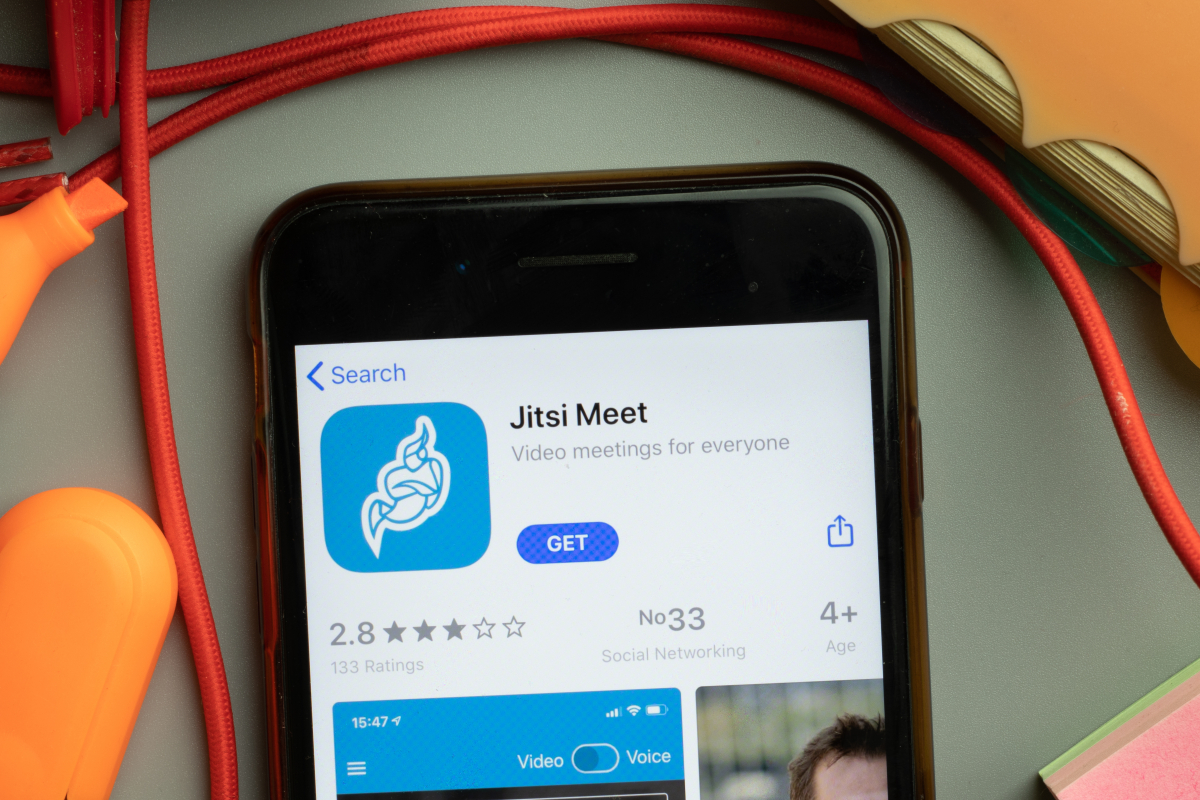Recommended smartphones for less than 500 euros
No time right now?
Note: We have used commission links in this article and marked them with “*”. If an order is placed via these links, t3n.de receives a commission.
Smartphones don’t have to cost 1,000 euros. We’ll show you a handful of recommended devices that you only have to spend half or less on.
For some, smartphones are a status symbol, which is why they always have to have the most expensive and up-to-date devices. An iPhone 12 Pro Max (test) or a Galaxy Note 20 Ultra (test), as stylish and high-performance as they are, cost more than 1,000 euros each. Those who place less value on status and full high-end equipment, but are looking for a good device with solid performance, good battery life and camera, will find models for less than 500 euros.
Sure, with cheaper smartphones, manufacturers save here and there on the equipment or use a different housing material if necessary. However, there are devices in which the smartphone manufacturers have made a balanced mix of components and have cut down on less relevant points. You won’t find the best cheap smartphones in our overview – they don’t exist because everyone has different demands on the smartphone. However, we consider the following smartphones to be recommended, as they either offer a well-designed equipment package or convince in terms of price-performance.
When making the selection, we also made sure that the devices were not dropped by the manufacturer after a year and no longer received updates. This is the case with Motorola’s Moto G series or the inexpensive Oneplus models of the N series – they only get one major Android update and that’s it.
iPhone SE (2020): The cheapest entry into the Apple world
iPhone SE 2020. (Image: Apple)
It’s easy for Apple fans: There is only one model below the 500 euro mark that comes into question here: the iPhone SE (2020). It costs from 479 euros * and, unlike the other iPhones from the manufacturer, is equipped with a Touch ID fingerprint sensor instead of Face ID. For the design, Apple used the iPhone 8 and it therefore has more edge around its 4.7-inch display than the current devices, which come with even larger screen diagonals. Inside, however, the latest technology is built in: Apple’s A13 bionic chip serves as the processor, which also does an excellent job in the iPhone 11 Pro Max (test).

iPhone SE (2016) next to the new iPhone SE 2020 and the iPhone 11. (Photo: WSJ)
For the camera, Apple has installed a sensor with twelve megapixels and f / 1.8 aperture in the 2020 SE. It delivers decent results, but due to the lack of additional ultra-wide angle or telephoto zoom lenses, the SE offers less variability than the more expensive iPhone models. Despite the low price, it is water and dust resistant according to protection class IP67: It can do a dive of one Survive meters depth for up to 30 minutes. Apple’s update policy also ensures a long service life, which means that the 2020 iPhone SE will receive regular iOS updates until 2024 or even longer – it already runs on iOS 14.
Pixel 4a: Top price-performance android in a compact housing

Like back then ™: The Google Pixel 4a has a built-in fingerprint sensor on the back. (Photo: t3n)
On the Android side, Google has an excellent answer for the iPhone SE with its Pixel 4a (test). The smartphone with its 5.8-inch display is extremely handy for current conditions, and it also has an excellent camera on board, which is on par with Google’s top model Pixel 5 (test). Like the Apple counterpart, there is only one sensor installed – but sometimes less is more, especially in these price ranges. Because Google demands for the 4a only 340 euros *.
The fact that the smartphone does not have a high-end processor should not surprise anyone. The Snapdragon 730 with six gigabytes of working memory and 128 gigabytes of flash memory still does a good job. The manufacturer has also made savings on the housing and relies on plastic instead of glass or metal. Still, it feels good in the hand.
In addition to the excellent camera, the software of the Pixel 4a also shines, as it comes directly from Google’s hand and is therefore always up-to-date and not overloaded. Despite the low price, Google does without bloatware, which unfortunately is almost standard in many smartphones in this price range. Just as gratifying: Google is delivering major Android updates including monthly security patches for three years. Very few people still do that.
If you value a larger display and an ultra-wide-angle camera, check out the 5G version of the Pixel 4a. The model with the slightly faster Snapdragon 765G and larger display also costs less than 500 euros and is considered the budget version of the excellent Pixel 5 (test). Relevant for some: The 4a (5G) even has a 3.5-millimeter headphone jack.
More on this: Google Pixel 4a 5G compared to the Pixel 5: This is how the budget model differs from the more expensive Google model
Oneplus Nord: Good upper middle class with a 90 Hertz display

Oneplus North. (Photo: t3n)
With the Nord, Oneplus tried its hand at mid-range in the summer and scored points straight away. Because for a price of less than 400 euros * In the basic version you get a 90-Hertz AMOLED display with a diagonal of 6.44 inches and Full HD Plus resolution. The high refresh rate in particular is rather rare in devices in this price range, but it actually makes the interaction feel more fluid and direct.
As in the Pixel 5 and 4a 5G, the Oneplus Nord (test) features a Snapdragon 765G chip that delivers solid performance and is ready for fast 5G cellular communications. In terms of storage technology, eight or twelve gigabytes of RAM and 128 or 256 gigabytes of flash memory are optionally available. The 4,115 mAh battery delivers a good sound time, which is no different with Google’s pixel models. With a 30-watt warp charge, however, the device can be recharged much faster than Google’s Pixel 4a, which only manages 18 watts.
On the camera side, Oneplus has installed four sensors on the rear of the device, but basically only the wide-angle camera is convincing for regular use. Here Oneplus installs the same sensor that is also used in the more expensive Oneplus 8T. The image quality is quite good, but does not match the results of the pixel phones. The ultra-wide angle camera can also be used, but you can feel the difference in quality compared to the primary lens. The same goes for the macro lens.

Oneplus Nord and Pixel 4a in size comparison. (Photo: t3n)
For a starting price of less than 400 euros, you get a complete package that is impressive not only in terms of hardware but also software. Because the in-house user interface OxygenOS runs super fluently and is not overloaded. The manufacturer offers software updates for two years, so that you still get at least Android 12.
Galaxy A51: Samsung’s middle class with a 3-year update guarantee

Samsung Galaxy A51. (Photo: t3n)
Top dog Samsung must not be forgotten in this list. But not because it is Samsung, but because the South Korean industry leader not only offers solid devices in the high-end segment, but also in the lower to medium price range.
Samsung’s Galaxy A51 has a 6.5-inch Full HD Plus display and a quadruple camera with a 48-megapixel main sensor on the back, which is supported by ultra-wide-angle, telephoto and macro cameras. The image quality of the cameras is okay, but in no way comes close to the Pixel 4a. The setup is sufficient for snapshots in daylight.

Samsung’s Galaxy A51 comes with a quadruple camera. (Photo: t3n
Samsung’s Galaxy A51 is powered by the in-house Exynos 9611 chip, which ensures sufficient performance – in the larger model A71, which was announced at the same time, Samsung is now using Qualcomm’s Snapdragon 730. Samsung offers variants with four to eight gigabytes of RAM and 64 and 128 gigabytes of flash memory, which can be expanded by up to 512 gigabytes using a micro SD card. The battery of the A51 is a decent size with 4,000 mAh and can be charged with up to 15 watts. For the street price from about 230 euros * you’re not doing much wrong. By the way, many seem to see the same thing, because the A51 is the world’s best-selling Android smartphone of 2020. It is also worth highlighting with the A51 that Samsung promised in the summer that the device – together with other models from the Galaxy and A series – for three years of major Android updates and security patches. Unfortunately, very few manufacturers do that.
Xiaomi Mi 10 Lite 5G – affordable entry into 5G

The Xiaomi Mi 10 Lite 5G offers a good price-performance ratio. (Image: Xiaomi)
Xiaomi’s Mi 10 Lite 5G, which was presented in spring 2020, is ideal for an affordable entry into the 5G world. The device costs the manufacturer less than 250 euros, at Amazon a little more *, and has the same processor as the Oneplus Nord and Pixel 4a 5G, which cost far more. The other features with a 6.57-inch Full HD Plus AMOLED display and HDR10 Plus support from six gigabytes of RAM and from 128 gigabytes of memory are not bad either.
Sure, the camera has to be compromised again, but it’s not bad for the price range either. Xiaomi uses a 48-megapixel sensor with an f / 1.79 aperture as the main sensor, which is supported by three additional sensors with two times two and eight megapixels. The two two-megapixel cameras are responsible for macros and depth shots, while the eight-megapixel sensor can take ultra-wide-angle photos with a 120-degree angle of view. The 4,160 mAh battery can be charged relatively quickly with up to 20 watts. On the software side, the device runs on the current MIUI 12 user interface, but still on the basis of Android 10 – Android 11 will certainly also receive it. Unfortunately, while Google and Samsung give clear information about their updates, it is less clear with Xiaomi.



